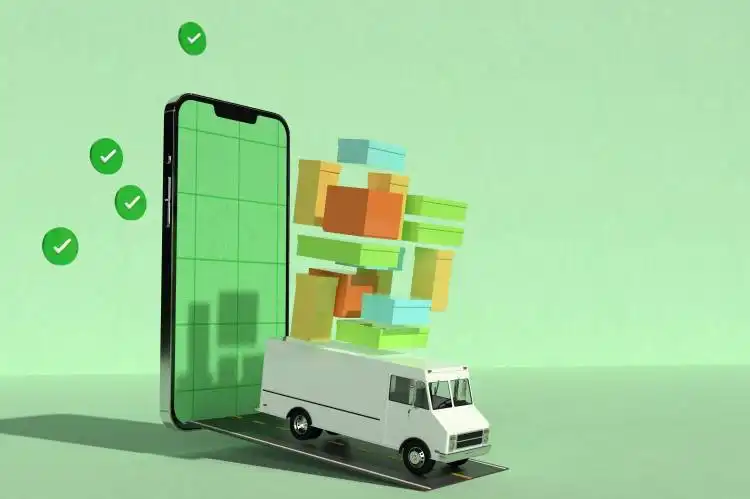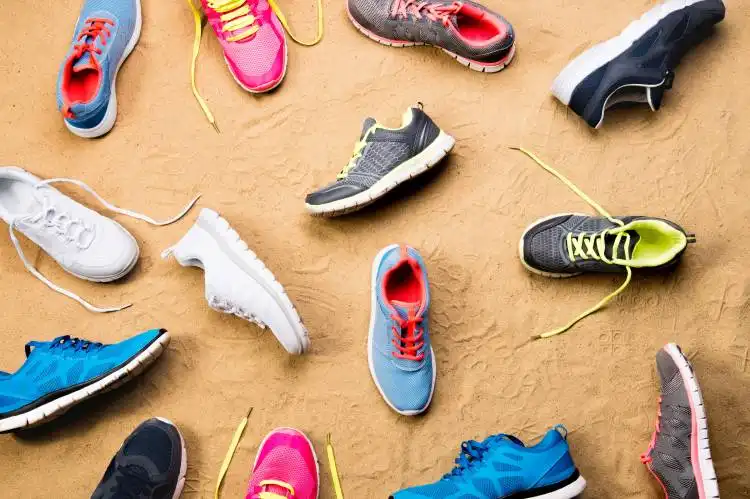Start an Online T-Shirt Business
Embrace Your Inner Fashionista: Launching Your Online T-Shirt Empire on a Budget
| Updated


ONLINE T-SHIRT BUSINESS
Eager to venture into the fashion world but tight on budget? An online T-shirt business could be your gateway to the industry! This enterprise lets you channel your creativity into wearable designs, becoming a tailor to the world's fascinating canvas – human bodies. From pop culture references to powerful quotation shirts, you'll cater to a plethora of tastes, wearing the ultimate crown of a trendsetter, while primarily operating it all from your home or office, reducing the overhead costs.
Jump to Business Plan
RELATED BUSINESS IDEAS
Browse ALL Retail & Shopping Business Ideas
Discover Your Perfect Domain
Unlock the door to your online success with our hand-picked selection of premium domain names. Whether you're starting a new venture or rebranding an existing one, the right domain can set the tone for your digital presence. Browse through our curated list, each with its unique potential to enhance your brand's visibility and credibility.
ONLINE T-SHIRT MINI BUSINESS PLAN
This a quick reality check to help you identify the strengths and weaknesses of your business concept before you dive in.
Design and Product Creation:
- Unique Designs: Your designs should stand out and cater to your target audience. Collaborate with artists or use design software.
- Quality Material: Source for quality material that makes your product more durable and attractive.
Marketing and Customer Acquisition:
- Social Media Advertising: Leverage Instagram, Facebook, and Pinterest to reach your audience.
- Email Marketing: Use this to retain customers. Sending out regular newsletter and discount codes.
Sales and Customer Experience:
- User-friendly website: Ensure your website is easy to navigate and mobile-friendly.
- Customer service: Provide excellent customer service to gain repeat customers. Answer queries and resolve issues promptly.
Cost Control:
- Print-on-demand Service: This eliminates the need for inventory, reducing storage and unsold stock costs.
- Offer Standard and Express Shipping: This accommodates customers with different budget constraints, increasing the likelihood of sales.
Business Operations:
- Create New Designs Regularly: This keeps your brand fresh, and encourages customers to come back.
- Track Your Finances: Keep track of every expense, sale, and profit. This will help you adjust pricing and strategies as required.
Please note: These are uncertainties and hazards in running an online business such as unexpected shippings delays, potential returns, and various competitors in the online market space. Always get advice from finance and business experts.
NOT WHAT YOU HAD IN MIND? Here are more ideas



Browse ALL Retail & Shopping Business Ideas
Grab Your Business Website Name
Before you get caught up in the whirlwind of setting up your business, invest in a domain name. It's a small but significant step that lays the foundation for your brand and makes it easier for customers to find and trust you. Just like you wouldn't build a house without securing the land first, don't build a business without securing your domain name.
"Why? Can't that wait?" Here's why it shouldn't
Step 1: Determine if the Business is Right for You
Breakdown of Startup Expenses
Before starting an online t-shirt business, it is important to understand the costs associated with launching the business. This includes the cost of the website, the cost of the t-shirts, the cost of any necessary equipment, and the cost of any marketing materials. Additionally, it is important to consider the cost of any software or services that may be needed to run the business, such as inventory management software or a payment processor.
Breakdown of Ongoing Expenses
Once the business is up and running, there are ongoing expenses to consider. This includes the cost of any additional t-shirts, the cost of any additional equipment, and the cost of any additional marketing materials. Additionally, it is important to consider the cost of any software or services that may be needed to keep the business running, such as customer support software or a payment processor.
Examples of Ways to Make Money
There are many ways to make money with an online t-shirt business. The most common way is to sell the t-shirts directly to customers. Additionally, you can also offer custom designs, dropshipping, or wholesale services. You can also offer affiliate programs, where you pay other businesses or individuals to promote your t-shirts. Finally, you can also offer bulk discounts or special promotions to encourage customers to purchase more t-shirts.
Step 2: Name the Business
Brainstorm When it comes to naming a business, brainstorming is a great place to start. Think of words that relate to the t-shirt business, such as “tees”, “shirts”, “apparel”, “threads”, etc. Write down all of the ideas that come to mind, and then narrow down the list to the ones that stand out the most.
Research Competitors Once you have a list of potential names, it is important to research the competition. Look at the names of other online t-shirt businesses and make sure that your name is unique and stands out. This will help you to create a memorable brand that customers will recognize.
Check Domain Availability Once you have chosen a name, it is important to make sure that the domain name is available. If the domain name is not available, you may need to come up with a different name or add a word or two to the end of the name.
Use a Naming Tool If you are having trouble coming up with a name, there are a variety of online tools that can help. These tools can generate ideas based on words that you provide, and can help you to come up with a creative and unique name for your business.
Test the Name Once you have chosen a name, it is important to test it out. Ask friends and family for their opinion on the name, and see if it resonates with them. This will help you to determine if the name is a good fit for your business.
Step 3: Create a Business Plan
Creating a business plan is an important step in starting an online t-shirt business. The business plan should include a description of the business, a market analysis, a competitive analysis, a marketing plan, a financial plan, and an operational plan.
The business description should include a brief overview of the business, its purpose, and its goals. It should also include the type of t-shirts the business will offer, the target market, and the business’s competitive advantage.
The market analysis should include an analysis of the current market, the target market, and the potential customer base. It should also include an analysis of the industry, the competition, and the customer’s needs.
The competitive analysis should include a comparison of the business’s products and services with those of its competitors. It should also include an analysis of the pricing, promotion, and distribution strategies of the competitors.
The marketing plan should include a description of the marketing strategy, the budget, and the tactics to be used. It should also include an analysis of the customer’s needs, the target market, and the competition.
The financial plan should include a budget, a cash flow statement, and a profit and loss statement. It should also include an analysis of the business’s financial performance and a forecast of future financial performance.
The operational plan should include a description of the operational procedures and processes, the staffing plan, and the organizational structure. It should also include an analysis of the business’s operational performance and a forecast of future operational performance.
Step 4: Obtain Necessary Licenses and Permits
Before starting an online t-shirt business, it is important to obtain the necessary licenses and permits. Depending on the state, some of the necessary licenses and permits may include a business license, a seller's permit, and a resale permit. Additionally, if the business will be selling products online, it may be necessary to obtain a web hosting license.
Research Local Laws
When obtaining the necessary licenses and permits, it is important to research local laws to ensure that the business is compliant. This includes researching any zoning laws that may apply to the business as well as researching any laws that may apply to the type of products that the business will be selling. Additionally, research should be conducted to determine if any additional licenses or permits may be required.
Contact Local Government
Once the necessary licenses and permits have been identified, the next step is to contact the local government to obtain the necessary paperwork. This paperwork will need to be filled out and submitted with the appropriate fees. It is important to note that the process of obtaining the necessary licenses and permits may take several weeks, so it is important to plan accordingly.
Keep Records
Once the necessary licenses and permits have been obtained, it is important to keep records of them. This includes keeping copies of the paperwork and any other documentation that may be required. Additionally, it is important to keep track of any fees that were paid as well as any deadlines that may be associated with the licenses and permits. Keeping track of these records will help ensure that the business remains compliant with local laws.
Step 5: Choose a T-Shirt Supplier
Quality of the T-Shirts When choosing a supplier, it is important to consider the quality of the t-shirts they provide. It is important to make sure that the t-shirts are made of high-quality materials that will last and look good. Additionally, it is important to make sure that the t-shirts are available in a variety of sizes and colors.
Cost of the T-Shirts The cost of the t-shirts is also an important factor to consider when choosing a supplier. It is important to make sure that the t-shirts are affordable so that they can be sold at a reasonable price. Additionally, it is important to make sure that the cost of the t-shirts is not too high so that the business can make a profit.
Shipping Costs When choosing a supplier, it is important to consider the shipping costs associated with the t-shirts. It is important to make sure that the shipping costs are reasonable so that the business can make a profit. Additionally, it is important to make sure that the shipping costs are not too high so that the customer is not paying too much for the t-shirts.
Reputation of the Supplier The reputation of the supplier is also an important factor to consider when choosing a supplier. It is important to make sure that the supplier is reputable and has a good track record of providing high-quality t-shirts. Additionally, it is important to make sure that the supplier is reliable and will deliver the t-shirts on time.
Payment Terms The payment terms of the supplier is also an important factor to consider when choosing a supplier. It is important to make sure that the payment terms are reasonable and that the business can make a profit. Additionally, it is important to make sure that the payment terms are flexible so that the business can adjust to changes in the market.
Step 6: Design Your T-Shirts
Designing your t-shirts is a crucial part of starting an online t-shirt business. You want to make sure that your designs are attractive and eye-catching, as this will help to draw customers to your business. When designing your t-shirts, consider the following tips:
Make sure your designs are unique and original. You want to stand out from the competition, so make sure your designs are something that people haven't seen before.
Consider the colors you use in your designs. Bright colors tend to be more eye-catching, but you should also consider the colors that will look best on the t-shirt material.
Use high-quality images and graphics. Poorly designed images and graphics will make your t-shirts look cheap and unprofessional.
Consider the size of your designs. You don't want your designs to be too large or too small, as this can make them look unappealing.
Think about the message your designs are conveying. You want your designs to be meaningful and to have a message that resonates with your customers.
By following these tips, you can ensure that your t-shirts are attractive and eye-catching, and that they will help to draw customers to your business.
Step 7: Set Up Your Online Store
Setting up an online store is a critical step in starting an online t-shirt business. There are many platforms available to help you create an online store. Some of the most popular platforms are Shopify, WooCommerce, and BigCommerce. Each platform has its own advantages and disadvantages, so it’s important to do your research and decide which platform is best for your business. Shopify is a great option for those who are just starting out, as it is very user-friendly and has a lot of features. WooCommerce is another popular option, as it is open-source and can be customized to fit your needs. BigCommerce is a great option for those who want a more advanced store, as it has a lot of features and is very customizable.
Designing Your Online Store
Once you’ve chosen a platform for your online store, it’s time to start designing it. This includes choosing a template, adding products, setting up payment methods, and more. It’s important to make sure your store is user-friendly and looks professional. You should also make sure that your store is optimized for mobile devices, as more and more people are using their phones to shop. Additionally, you should make sure that your store is secure and that you have a privacy policy in place.
Promoting Your Online Store
Once your store is set up, it’s time to start promoting it. This includes creating a marketing plan, setting up a social media presence, and running ads. You should also consider creating a blog or website to help promote your store. Additionally, you should look into SEO (Search Engine Optimization) to help your store rank higher in search engine results. Finally, you should look into email marketing to reach out to potential customers and keep them informed about your store.
Step 8: Market Your Business
Social Media When it comes to marketing your business, social media is a great place to start. You can create a business page on platforms like Facebook, Twitter, and Instagram to start building an audience and engaging with potential customers. You can also use these platforms to promote your products, share updates, and create content to drive traffic to your website.
Paid Advertising Paid advertising is another great way to market your business. You can use platforms like Google Ads and Facebook Ads to target specific audiences and get your products in front of potential customers. You can also use these platforms to track your results and measure the success of your campaigns.
Email Marketing Email marketing is a great way to stay in touch with your customers and keep them informed about new products and promotions. You can use email marketing to send out newsletters, special offers, and other updates to keep your customers engaged and coming back for more.
Influencer Marketing Influencer marketing is a great way to reach a larger audience and get your products in front of potential customers. You can work with influencers in your niche to create content and promote your products to their followers. This can be a great way to get more exposure and increase your sales.
Networking Networking is also a great way to market your business. You can attend local events, join online groups, and connect with other entrepreneurs in your industry to build relationships and get your products in front of potential customers.
Step 9: Monitor Your Business
Track Your Sales When starting an online t-shirt business, it is important to track your sales. This can be done by using a spreadsheet or a sales tracking software. This will help you to see which products are selling the best and which ones are not. You can also use this data to adjust your pricing and marketing strategies.
Analyze Your Data Once you have tracked your sales, it is important to analyze the data. This can be done by looking at the number of sales, the average price of the items sold, the customer demographics, and other factors. This will help you to identify trends and areas where you can improve your business.
Monitor Your Competitors It is also important to monitor your competitors. This can be done by researching their products, pricing, and marketing strategies. This will help you to stay ahead of the competition and make sure that your business is successful.
Keep Up With Industry Trends Finally, it is important to keep up with industry trends. This can be done by reading industry publications, attending conferences, and networking with other business owners. This will help you to stay up to date on the latest trends and ensure that your business is successful.
EXPLORE MORE CATEGORIES
Browse ALL Business Idea Categories
TAKE THE NEXT STEPS










